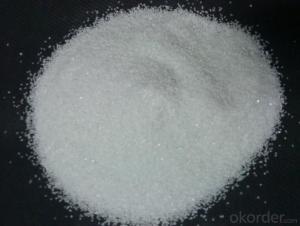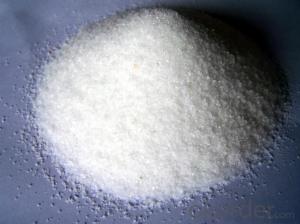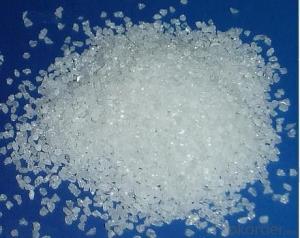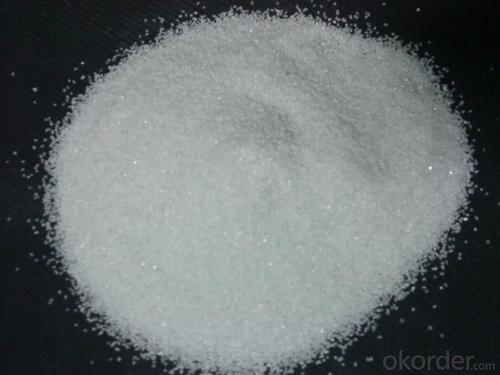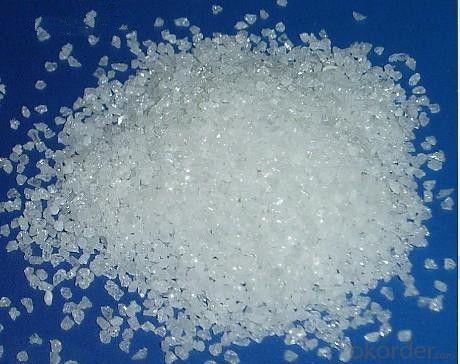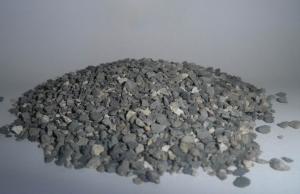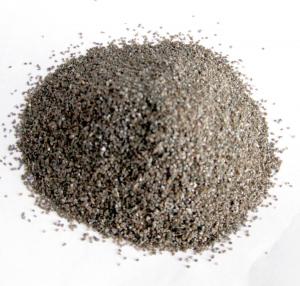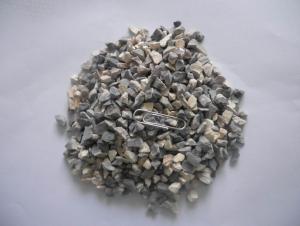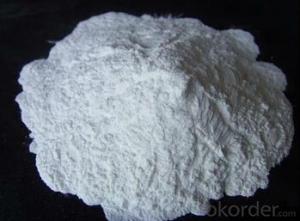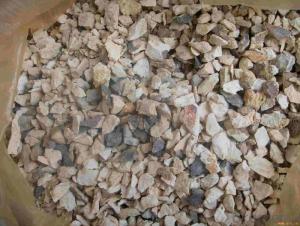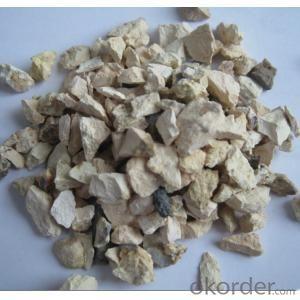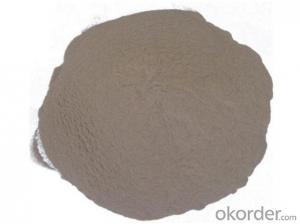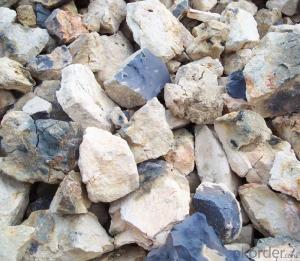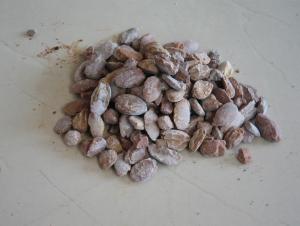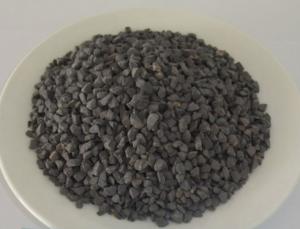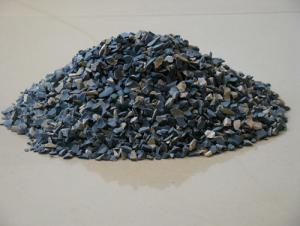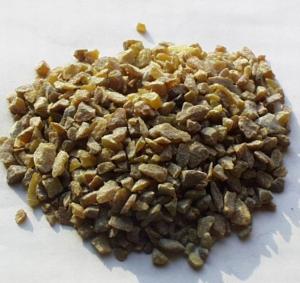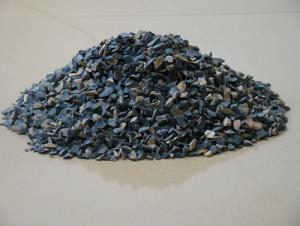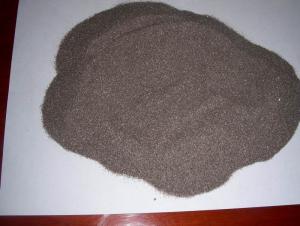Raw Materials for Refractory - Abrasive White Fused Alumina 60#-100#
- Loading Port:
- Tianjin
- Payment Terms:
- TT OR LC
- Min Order Qty:
- -
- Supply Capability:
- 1000MT m.t./month
OKorder Service Pledge
Quality Product, Order Online Tracking, Timely Delivery
OKorder Financial Service
Credit Rating, Credit Services, Credit Purchasing
You Might Also Like
Specification of Abrasive White Fused Alumina
Item | Chemical Composition | |||
Al2O3 min | NaO2 max | SiO2 max | Fe2O3 max | |
12#-60# | 99.15 | 0.26 | 0.08 | 0.05 |
60#-100# | 99.15 | 0.28 | 0.09 | 0.06 |
120#-150# | 99.1 | 0.29 | 0.10 | 0.08 |
180#-220# | 99.05 | 0.31 | 0.12 | 0.1 |
230#-800# | 98.5 | 0.5 | 0.15 | 0.1 |
1000#-1200# | 98.1 | 0.6% | 0.18 | 0.1 |
Packaging & Shipping
In 1MT jumbo bag or as the buyer request.
We ship the cargo in 20' GP containers,each container loads 25MT/20bags.
Application of white fused alumina
Made of abrasive, suitable for grinding hardened alloy steel, high speed steel. Fine-grained flour is also used for precision casting.
- Q: Where is the production of refractory manganese alloy manufacturers? Manganese is recommended between 63 and 70!
- There are a lot of silicon manganese alloy manufacturers, production market is relatively large, the manganese content in manganese alloys between 63 to 70 or more common
- Q: How to distinguish the fire resistant level of the rubber and plastic thermal insulation material?
- Level A of non-combustible insulation materials are: W W inorganic active wall insulation materials, cement foam insulation board, glass beads of insulation mortar, rock wool board, glass wool board and foam ceramics, ect. Th e level A is non-combustible material, characterized with low density, low thermal conductivity, high bearing capacity, convenient construction, economy and durablity, and widely used as the thermal insulation materials in hot pipes, thermal equipment and other pipe-line equipment and industrial architectures, and as the thermal insulation, heat insulation and sound-absorbing materials in industrial and civil building envelope. Because of its good thermal stability, it is more used as fire-resistant protective coating material of steel structure.
- Q: What's the poured refractory material?
- According to its category, raw material of basic refractory: Mainly magnesite (magnesia), dolomite, lime, olivine, serpentine, high alumina material (sometimes neutral); main neutral raw material: chromite, graphite, silicon carbide (artificial).
- Q: What are the characteristics of the carbon composite refractories?
- The features of carbon composite refractories: 1. It is with an aggressive high thermal shock resistance 2. Good resistance to molten steel and slag
- Q: how is the high-temperature flame-retardant fibre board?
- The market is mainly divided into three kind of fiber. Density fiberboard, medium density fiberboard, high density fiberboard. Density fiberboard: It is rolled timber sheet made of wood shaving material produced by timber or non timber fiber that is added with or without glue or auxiliary material. A density of less than 450 kg / cubic meter, the larger fiber particles, the internal structure is not homogeneous, relatively lack of strength, lighter weight. MDF: use wood fiber or other plant fiber as material, added with glue. A sheet pressed at high temperature and pressure. A density between 450-880 kg / cubic meter, fiber particles is moderate, well proportioned internal structure, greater strength, moderate weight. HDF: Use wood fiber or other plant fiber as material, added with glue. A sheet pressed at high temperature and pressure. Its density is about 880 kg / cubic meter, small fiber particles, well proportioned internal structure, greater strength, greater weight. there are also artificial boards such as chipboard and melamine board in the market, generally used for making furnitures. the thickness of fiberboard that is produced and controlled more flexibly, is generally 5 per cent (general bulk price of 30 yuan per square meter), 9 cm (50 yuan), 18 cm (100), 25 cm (120), etc. There are thicker. However, proper deviation is acceptable. The board is usually thicker or thinner than the specified thickness. For example, It is only 16mm when specified 18mm.
- Q: What are the differences between intensive refractory busway and other busways?
- Compact busway is named according to its structure, and fire-resistant busway is named after its uses. Compact busway especially refers to busway which is closely laminated between phases and between phase and shell, and use thin insulating material to achieve the insulation result. suitable for power supply system of alternating current three-phase four-wire, three-phase five-wire system, frequency of 50 ~ 60Hz, rated voltage up to 690V, rated operational current of 250 ~ 5000A, as auxiliary equipment for mining, enterprises and high-rise buildings, and especially suitable for the transformation of workshop and old enterprises. Fire-resistant busway is composed of shell coated with fire retardant paint, bus line wrapped with fire-resistant mica tape and bracket made by refractory insulating material. Bracket has a plurality of grooves where inbedding the bus line and fixed it. There is a busway connecting box at one end of the busway and there is a bus line splitter box in the busway. Fire-resistant busway has excellent insulation properties, which can not only be used continuously in a normal environment, but also can be used in the fire environment continuously for more than one hour, suitable for high-rise buildings and important facilities, replacing the fire-resistant cables to transmit and distribute power .
- Q: What are the commonly used admixture for alumina-magnesia refractory? What are the impacts on its performance?
- Sodium silicate, pure calcium aluminate cement, boric acid
- Q: What types of steel are silicious quicksand and chromium quicksand used in respectively?
- Chromium quicksand can be used in steel-making process that has longer refining time like LF, VD and RH, in stainless steel drainage and thin plate drainage agent. Silicious quicksand is used in short steel-making process, process that is less than 45 seconds or process without refining. You can consult Hua Heng for details or inspect it by yourself.
- Q: How to divide fire resistant level of fire door?
- The classification of fire resistant level of fire door: Grade A is not less than 1.2h. Grade B is not less than 0.9h. Grade C is not less than 0.6h. It is suitable for fire door with different levels: Grade A: Equipment room (such as fire-pump room,power distribution room, generator room, smoke control fan room, etc) door, fire?compartment, door on firewall; Grade B: Eclosed staircase, front door of stair room, smoke-proof?staircase and fire elevator share lobby door, front door of fire elevator, household door which directly opens to front room or shares room; Grade C: The vertical shaft door, such as strong electric wells, weak electric wells, pipe shaft door and air conditioning facilities. I hope this information can help you.
- Q: What's the fire endurance of A grade fireproof glass curtain wall?
- An hour and a half, an hour, and half an hour. As a key step in the home fire prevention, fire door is particularly important. According to the fire endurance and heat insulation performance, it can be classified as follows: A class fire door with fire endurance of no less than 1.5h; B class fire door with fire endurance of no less than 1h; C class fire door with fire endurance of no less than 0.5h. We can choose according to different needs, while A class fire door and B class fire door are now commonly used. Fire door has great varieties, and the material it uses is also of wide range. It includes stainless steel fire doors, glass fire doors, steel fire doors, etc. The most important feature of fire door is its fire resistance period. The main difference between A class fire door and B class fire door lies in their fire endurance, of which the former is no less than 1.5h, while the latter is no less than 1h. Difference between A class fire door and B class fire door also lies in their fireproofing material. That is the thickness of the built-in fire prevention board, of which A class fire door is 52mm, while B class fire door is 46mm. Therefore A class fire door obtains longer fire resistance period than that of B class fire door and gains better fireproof performance. A class fire door and B class fire door also differ in the places they are used. A class fire door is generally used in important fire fighting access of machine rooms, warehouses and oil depots, etc. and flammable and explosive public places, while B class fire door is generally used in the ordinary fire fighting access of some ordinary buildings. But B class fire door is more widely used than A class fire door.
Send your message to us
Raw Materials for Refractory - Abrasive White Fused Alumina 60#-100#
- Loading Port:
- Tianjin
- Payment Terms:
- TT OR LC
- Min Order Qty:
- -
- Supply Capability:
- 1000MT m.t./month
OKorder Service Pledge
Quality Product, Order Online Tracking, Timely Delivery
OKorder Financial Service
Credit Rating, Credit Services, Credit Purchasing
Similar products
Hot products
Hot Searches
Related keywords
